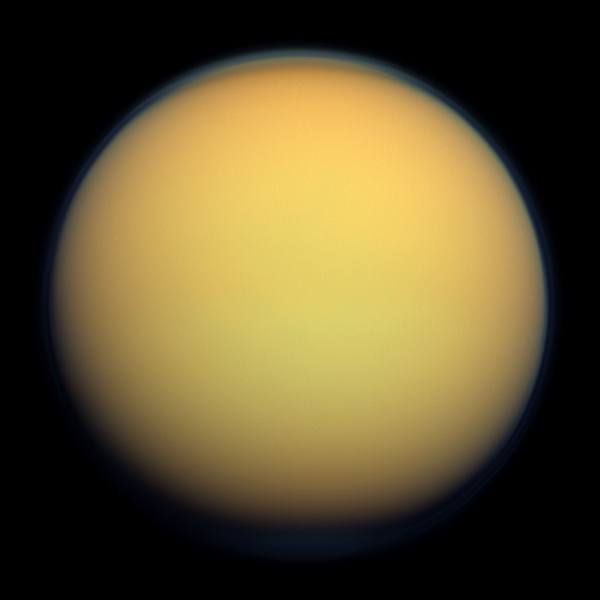*This post may contain affiliate links. This means we may make a commission if you purchase an item using one of our links*
Europe is the second smallest continent on Earth, whilst Titan is the second biggest natural satellite in our solar system. Still, there’s no comparison regarding which one is bigger as the former is a flat land mass with a surface area of 10.53 million square kilometers and a volume of 420 million cubic kilometers while Titan is a spherical body with a surface area of 83 million square kilometers and a volume of 71.6 billion cubic kilometers.
For a more detailed look at what makes Europe and Titan as big as they are, continue reading as it will be covered in more detail below.
How Big Is Europe?

Europe is technically considered the second smallest continent in the world, only beaten by Australia. Europe comprises the far west projecting peninsula of Eurasia, a landmass it shares with Asia, and the small continent makes up 2% of the earth’s surface.
Europe’s territory can be tricky to pinpoint. But we will do our best to explain it for you; the Artic ocean borders its to its North and the Atlantic Ocean lies to its West. To the South lies the Mediterranean and Black seas, the Kuma Manych Depression, the Caspian sea, the Ural mountains, and the Zhem River divide it from Asia.
From north to south, Europe covers an area of 3,341 kilometers and spreads approximately 2,154 from east to west. However, because it is an irregular shape, these measurements, when totaling the circumference to find out the land mass, you end up with a greater number; Europe covers a total landmass of 10.53 million square km.
Europe’s coastline is full of seas, fjords, and bays and runs for approximately 38,000 km. It has several islands, including Iceland, Ireland, the British Isles, Sardinia, Malta, Crete, and Cyprus.
As Europe is a continent, it comprises various countries, each with its borders. Some of the largest countries in Europe and their landmasses include France, with 547,030 square kilometers; Sweden, with 449,964 square kilometers, Ukraine, with 603,700 square kilometers; and Poland, with 312,685 square kilometers.
As a result it overall volume if say the average crust across all of the countries present within in it were to 40km, would be 420 million cubic kilometers.
How Big Is Titan?

Titan is the largest of Saturn’s moons and the second largest satellite in our solar system (following Jupiter’s moon Ganymede). It is the only moon in the Milky Way that has clouds and a planet-like atmosphere.
Titan has a diameter of 5,150 km and a surface area of 83,000,000 sq. km. This surface area gives Titan an impressive volume of 71,600,000,000 cubic km.
This moon is so fascinating to scientists that they will launch the $1 billion drone “Dragonfly” to explore its surface. Titan has a thick atmosphere; because of this, the moon experiences a methane cycle of evaporation and condensation that creates rain, clouds, seas, and rivers. Other than Earth, Titan is the only body in the solar system that shows clear evidence of stable bodies of surface liquids.
The moon’s surface is one of the most Earth-like places in the Solar System, though there are some vast differences. Firstly, the temperature is far, far colder, with an average surface temperature of −179.5 °C. And Titan’s gravity is only 14% of the Earth’s gravity, which means that a person weighing 100 kg on Earth will only weigh 14 kg on Titan.
Dutch astronomer Christiaan Huygens first discovered the moon in 1655 and named it Saturni Luna (Latin for “Saturn’s moon). It was in 1847 that English astronomer John Herschel suggested that the moon be renamed Titan from Greek mythology.
Scientists aren’t entirely sure about Titan’s origins but get some clues from its atmosphere. Instruments measuring the isotopes discovered that the ratio of Titan’s nitrogen isotope most closely resembles comets from the Oort Cloud – billions of icy bodies which orbit the Sun from a distance of 5,000 to 100,000 astronomical units.
This nitrogen ratio suggests that the moon was created from the same disc of dust and gas that formed the Sun.
Titan orbits at a distance of roughly 1.2 million kilometers from Saturn, a planet that is approximately 1.4 billion kilometers from the Sun. This vast distance means that sunlight takes around 80 minutes to reach Titan (compared to around eight minutes on Earth), and the light is 100 times fainter on this moon than we experience on Earth.
Summary
Titan is the second biggest moon while Europe is the 2nd smallest continent so, it does make sense that Titan is the bigger of the two, especially when you also consider it is bigger than Mercury too.
In regards to surface area Titan is roughly 8 times bigger than Europe’s while its volume is roughly 170 times more than Europe’s.

